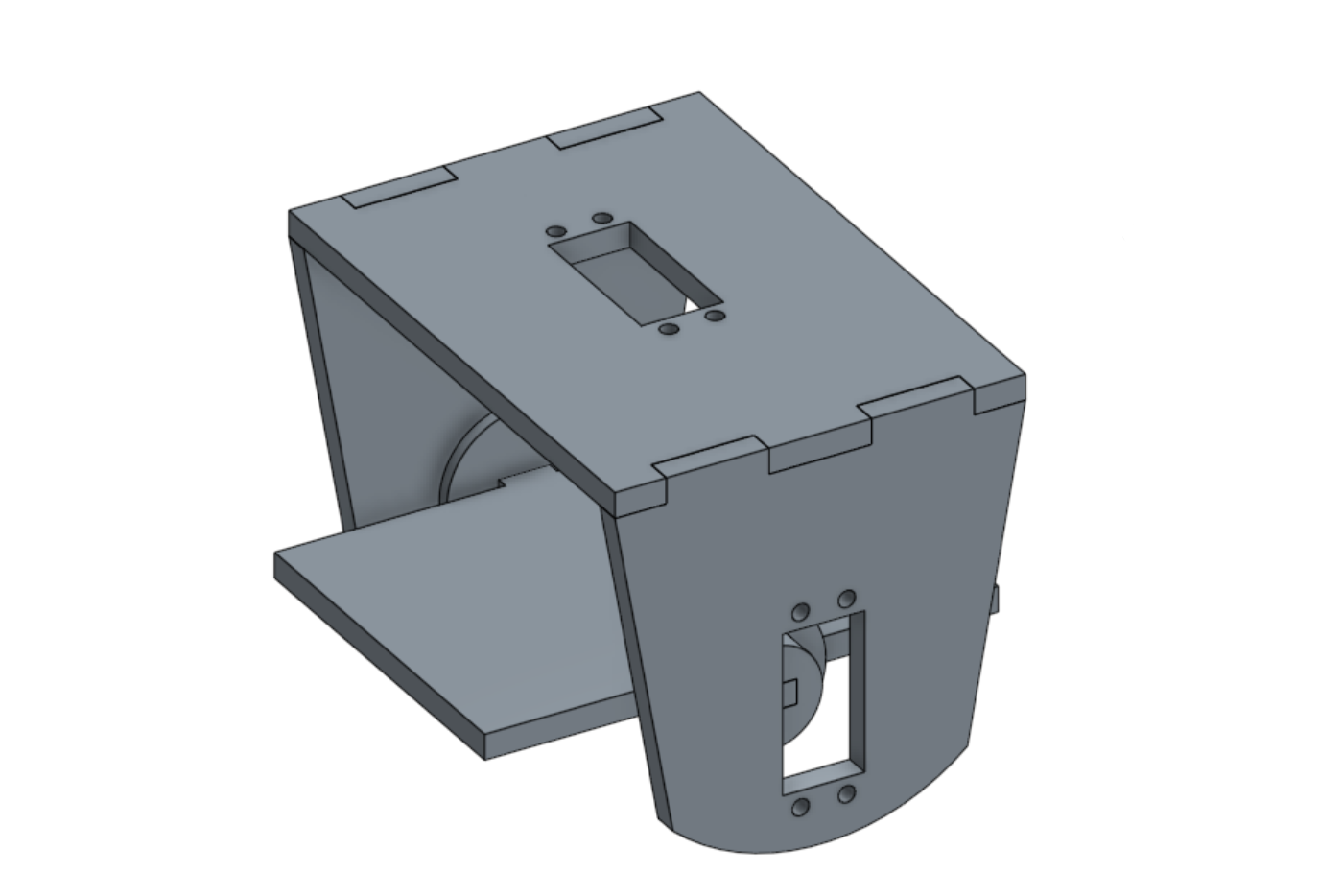LUX
Motion-Tracking Work Light used for examination
LUX is a system of motion-tracking work lights designed and built during MakeMIT 2017, a hardware hackathon. This system redirects the focus of the variable-intensity lights to exactly where the user needs it to be by tracking retroreflective totems (paperweights, wrist bands, etc.). LUX can also detect "intention" by only following objects that are presented to it, even if other totems are present in its view.
I designed the prototype light mount with minimal features to be simple and easy to make. The assembly was drawn up on Onshape, exported for laser cutting and later assembled with CA glue.
I also built a stand out of 80/20 to support the light mount and capacitive-touch intensity and on/off buttons and to unify the demonstration experience.
Here is a video of LUX in action. The work light first tracks the rectangular totem around the table - moving only when the totem moves. The user then shows a retroreflective wristband to the light to indicate the intention to "steal" the light from the totem, and demonstrates controlling the light with the wrist band. Note that even when the wristband is near the rectangular totem, the light continues to track the wristband.
Only one light setup was built for demonstration, but the system was implemented with the capacity to control multiple work lights. We would like to expand the number of work lights to an array of individual lights all controlled by the same system. The system currently has the capacity to control roughly 6 lights independently. Further, the current design of the light mount should be updated to better mesh with the totem tracking scheme.
For future implementations, the LUX platform could be expanded to portable work lights to help bring light to dark places (under a car, tight spaces, and other dark places).
LUX was awarded the NVIDIA prize and second place.
In collaboration with Everardo Rosales, David Rosales, Joshua Sloane, and Thomas Needham for MakeMIT, a hardware hackathon, in Spring of 2017.
More information on the project can be found here.

